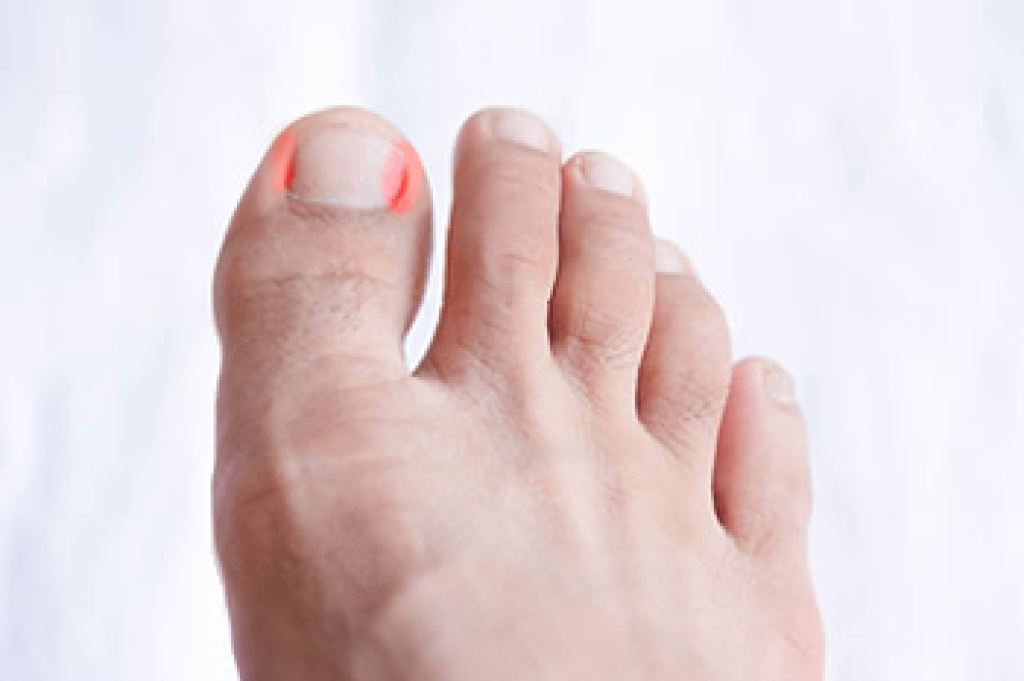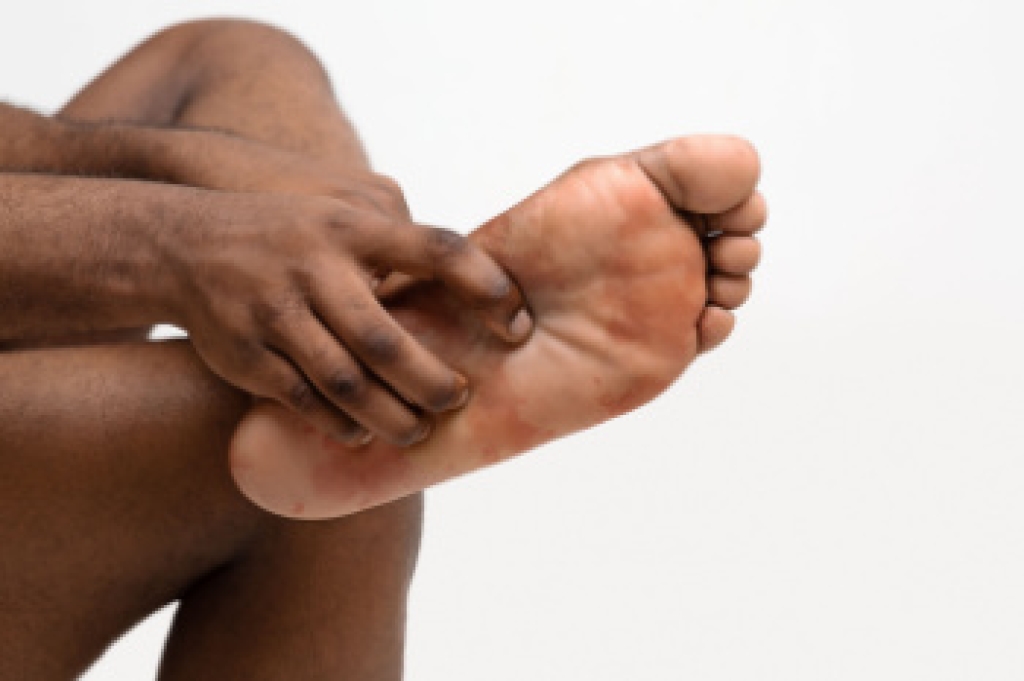
Ingrown toenails occur when the edge of the toenail grows into the surrounding skin, leading to pain, swelling, and sometimes infection. Common causes include improper nail trimming and cutting nails too short or rounded. Tight-fitting shoes, injury, or genetic predisposition are other factors. Symptoms typically begin with redness, tenderness, and swelling along the nail edge. As the condition progresses, the area may become warm, painful, and drain pus if infected. It may be difficult to wear shoes or walk comfortably. A podiatrist can diagnose an ingrown toenail through a physical exam. Treatment depends on the severity and may include soaking, proper trimming, and antibiotic ointments. In more advanced cases, a minor procedure, called nail avulsion, may be performed to remove part or all of the affected nail. This helps relieve pain and prevent recurrence. If you are dealing with a painful ingrown toenail, it is suggested that you make an appointment with a podiatrist for evaluation and treatment.
Ingrown toenails can become painful if they are not treated properly. For more information about ingrown toenails, contact one of our podiatrists of DeCaro Total Foot Care Center. Our doctors can provide the care you need to keep you pain-free and on your feet.
Ingrown Toenails
Ingrown toenails occur when a toenail grows sideways into the bed of the nail, causing pain, swelling, and possibly infection.
Causes
- Bacterial infections
- Improper nail cutting such as cutting it too short or not straight across
- Trauma to the toe, such as stubbing, which causes the nail to grow back irregularly
- Ill-fitting shoes that bunch the toes too close together
- Genetic predisposition
Prevention
Because ingrown toenails are not something found outside of shoe-wearing cultures, going barefoot as often as possible will decrease the likeliness of developing ingrown toenails. Wearing proper fitting shoes and using proper cutting techniques will also help decrease your risk of developing ingrown toenails.
Treatment
Ingrown toenails are a very treatable foot condition. In minor cases, soaking the affected area in salt or antibacterial soaps will not only help with the ingrown nail itself, but also help prevent any infections from occurring. In more severe cases, surgery is an option. In either case, speaking to your podiatrist about this condition will help you get a better understanding of specific treatment options that are right for you.
If you have any questions, please feel free to contact our office located in West Hatfield, MA . We offer the newest diagnostic and treatment technologies for all your foot care needs.









